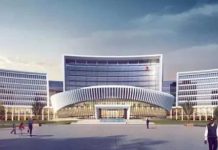Africa-Press – Kenya. Approximately Sh52.1 billion has been released back to the economy as a result of the expeditious resolution of cases through Court Annexed Mediation (CAM), data released by Chief Justice Martha Koome shows.
Her speech delivered by Deputy CJ Philomena Mwilu during the Annual Mediation Summit on Thursday stated that 16,770 matters out of 18,162 referred to CAM have been resolved.
This translates to a 92.3 per cent conclusion rate.
“The settlement rate has been improving yearly. The last financial year 2022/23 saw a settlement rate of 51.2 per cent while in the current year 2023/24, the settlement rate is at 54.98 per cent,” the speech read in part.
“In the current financial year, the average case running days is at 73 days.”
Since the 2023 summit on ‘Mediation and Banking’, Koome said over 400 matters have been referred to mediation in the banking sector alone.
“This has seen the release of approximately Sh7 billion released back to the economy.”
CAM has been rolled out in 40 counties and efforts are being made to bridge the gap in the remaining seven counties, with 60 Mediation Registries supporting 118 courts having been established.
The Chief Justice indicated that there has been a gradual increase in the number of accredited mediators growing to a total of 1,515 with 832 of them having active status.
“We are actively seized of the challenges relating to timely settlement of mediators fees and I want to use this opportunity to assure you that we are working on long-term solutions to this challenge,” she assured.
The second mediation summit has now shifted focus to labour relations and is themed, “Harmonizing Labour Relations: Fostering Social Justice and Economic Growth Through Mediation.”.
Koome acknowledged that labour relations are inherently complex, woven with the threads of human dignity, economic necessity and social equity.
“In a world where industrial disputes can arise as swiftly as the winds change, mediation stands as a beacon of hope – a tool that can transform conflict into consensus, and adversity into opportunity,” Koome opined.
She noted that mediation in labour disputes is about finding the middle ground where the rights of workers and the needs of employers coalesce to create a harmonious workplace.
“It is about ensuring that every voice is heard, every concern is addressed, and every outcome is just.”
She stressed that this balance is critical not just for the well-being of workers and the success of businesses, but for the overall health of our economy and society.
“As we navigate through the challenges of globalization, technological advancements, and shifting economic landscapes, the need for effective conflict resolution mechanisms becomes increasingly evident.”
The Employment and Labour Relations Court (ELRC) has over the last decade leveraged mediation to resolve some of the most complex labour disputes.
“I am happy to share with you that a total of 1,929 employment and labour relations matters have been referred to mediation. 1,796 of these matters have since been concluded which translates to a 93.1 per cent conclusion rate.”
The settlement rate for employment and labour matters referred to mediation from January 2024 to April 15 is at 52.21 per cent with the current average case running days for these matters being 36 days.
The CJ underscored that mediation, with its principles of confidentiality, voluntariness, and neutrality, offers a unique avenue for addressing labour disputes.
“Unlike traditional litigation, which often exacerbates the adversarial nature of disputes, mediation fosters a collaborative environment where parties can explore mutually beneficial solutions.”
ELRC Principal Judge Byram Ongaya said the court has embraced and recognised Alternative Dispute Resolution mechanisms as an effective approach to resolving disputes relating to employment and labour relations.
He said alternative dispute resolution mechanisms provide an opportunity to find innovative solutions that are mutually beneficial or not available in ordinary court proceedings.
“ADR and AJS are the way of the future for workspace and workplace disputes. Their role in making justice our true shield and defender is more crucial than can be achieved by court proceedings,” Justice Ongaya said.
Labour Cabinet Secretary Florence Bore who graced the opening ceremony termed mediation as a catalyst for broader societal transformation through fostering social justice within workplaces.
“Mediation not only offers a means to address traditional labour disputes but also provides a flexible framework to navigate emerging challenges in the world of work,” she said.
“By embodying principles of fairness, equity, and respect, mediation transcends differences and fosters sustainable solutions that benefit all stakeholders.”
For More News And Analysis About Kenya Follow Africa-Press






